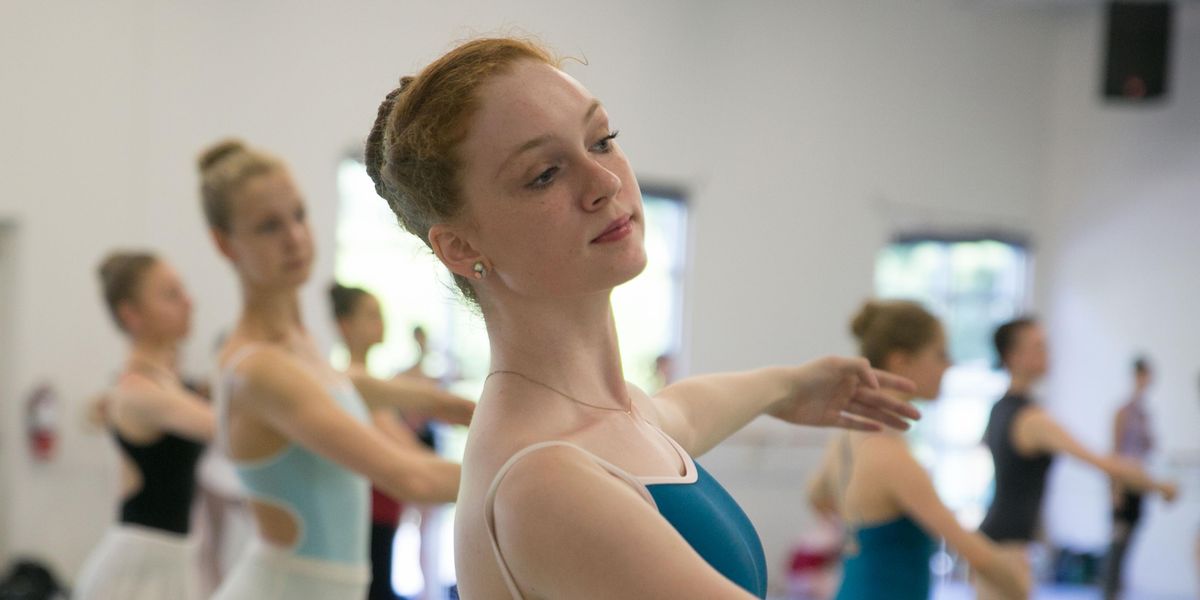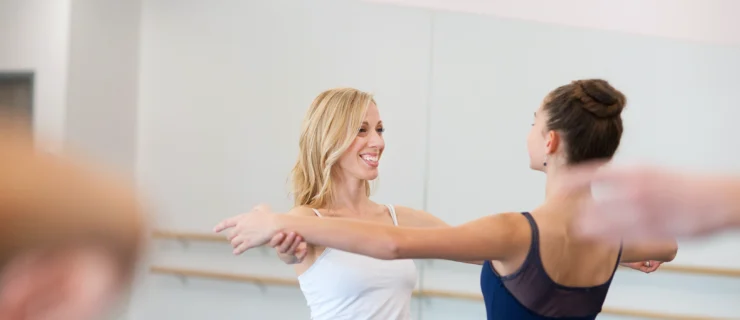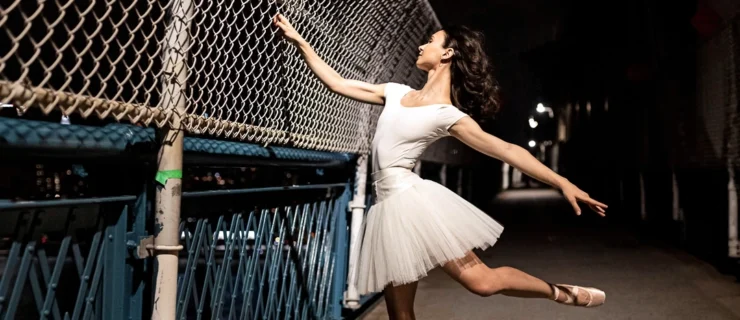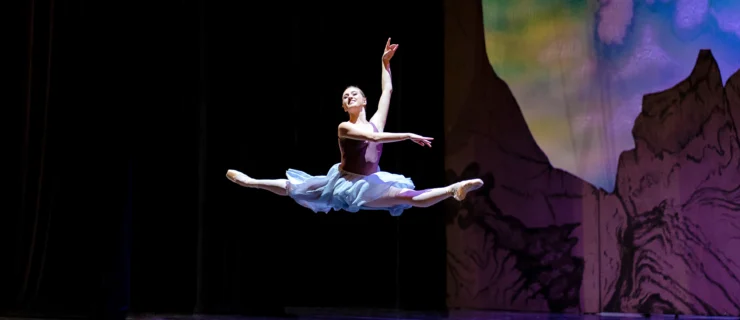Summer Intensive Audition Season Is Around the Corner. How Are Schools Adjusting for COVID-19?
It’s that time of year again—summer intensive audition season. But as the ballet world continues to adjust to the COVID-19 pandemic, what are schools planning for summer programs? What will auditions be like, and what are schools expecting of dancers? Pointe surveyed schools nationwide for their summer 2021 forecast.
Hopes Are High—but Realistic
Many schools are aiming for on-site summer intensives in 2021; after all, there are safety protocols for in-studio teaching, and coronavirus vaccines are on the way. Harid Conservatory director Gordon Wright speaks for many when he says that “we have every hope that conditions will allow us to offer a traditional, in-person summer intensive next June and July. We hope the most significant difference will be that the students are in our residence hall and studios rather than on our computer screens!” Full- or part-time in-person teaching is also plan A for the School of American Ballet (which is also holding a Young Dancer Virtual Workshop) and the schools of Carolina Ballet, Houston Ballet, Oregon Ballet Theatre, Pittsburgh Ballet Theatre and the Kaatsbaan Ballet Intensive.
Some, like the Dance Theatre of Harlem School, will actually start with online-only programming. “Out of an abundance of caution, we have made the decision to offer our summer intensive in a virtual format,” says Robert Garland, director of the DTH School and the company’s resident choreographer. “We would move to offering in-person classes or a hybrid if it is safe.” On the plus side, Garland says, online-only programming allows greater access and affordability because it eliminates travel and lodging costs.

Courtesy SAB
Those offering in-person sessions are planning on smaller class sizes in accordance with social-distancing rules, as well as mask-wearing requirements and rigorous cleaning. Kaatsbaan has a unique advantage in this regard—its own 153-acre park. “We plan on building a large outdoor studio for our 2021 summer program,” says Kaatsbaan executive director Sonja Kostich. “We understand how important it is to have fresh air and ample space for everyone to feel safe.” And in case partial or full lockdowns continue into the summer months, all of the schools we spoke to have backup plans with varying degrees of digital instruction.
Dial Up Your Technology
The figuring-it-out-as-we-go approach of 2020 is officially over. “Last year we were all learning,” says Houston Ballet Academy director Melissa Bowman. “We’ve seen dancers improving online, and we have adapted the way we’re training.” The School of Carolina Ballet is one of many that have leaned into the online format. “We outfitted our studios with portable microphones, cameras and large-screen monitors,” says Shelley Jacobsson, director of school operations.

Courtesy HARID Conservatory
And just as schools are delivering higher-quality content, SAB faculty chairman Kay Mazzo says, “we expect students to be much more comfortable with virtual learning. We doubt they will need much guidance from us on their at-home setups.”
Tech savvy matters at auditions, too. Most of the schools we spoke to will hold auditions online: Houston will accept submissions via Acceptd and hold live auditions via Zoom; Ballet Hispánico School of Dance requires a MindBody account; and Carolina, OBT and Kaatsbaan will evaluate applicants via Zoom sessions. Attendance will generally be very limited to ensure thorough evaluation—DTH will limit sessions to just 20 to 25 dancers, for example—and many are on a first-come, first-served basis. Some schools will forgo live auditions altogether, including SAB, which is accepting video applications from U.S.–based dancers for the first time in its history.

Will Cotton, Courtesy DTH
And there are still chances to audition in person. In fact, 14 major ballet academies have banded together to create a pandemic-adapted National Summer Intensive Audition Tour, allowing dancers to try out for multiple programs at once. Participating schools will host in-person auditions in their home cities in January or February (converting to Zoom if needed). Dancers can sign up through one of the academies and indicate which programs they’d like to audition for; representatives of all of the schools will observe the auditions via Zoom, and the sessions will be recorded so that they can take a closer look at the candidates. In case of COVID, weather or technical disruptions, NSIA schools will accept video auditions.
Keep in mind that many programs will be accepting fewer students for summer 2021, in order to comply with social-distancing rules and to facilitate online teaching. Visit websites as soon as possible to confirm sign-up deadlines, audition dates and technology requirements.
How You’ll Be Evaluated
The past 10 months have proven that dancers can advance while taking class at home, and schools have restored their standards accordingly. “Dancers across the board improved over our virtual summer intensive last year,” says Jacobsson. “Our expectations for auditioning dancers will be the same as always—strong technique and ability.” That said, schools are also realistic, says Mazzo. “We will not be judging you based on how ideal your dancing space is—it doesn’t matter if your barre is a chair or the kitchen counter!”
The small size of live online auditions ensures that you’ll be seen. Kaatsbaan, for example, is limiting Zooms to 20 applicants per class so that artistic director Stella Abrera and principal ballet teacher Martine van Hamel can see every dancer clearly, and they will review headshots and first-arabesque images ahead of time so that they are familiar with the dancers before class. “We have also enlisted an incredible group of demonstrators so that Ms. Abrera and Ms. Van Hamel can completely focus on the students,” says Kostich.

Nicole Sauter, Courtesy PBT
OBT School will record each audition. “There will also be opportunities to see short phrases of movement from one auditionee at a time,” says school director Marion Tonner. And given the notorious effect that Zoom has on musicality, “we turn a blind eye to the lag time between music and execution,” she says.
Schools doing video applications intend to give them the same diligent focus as in-person auditions. “The plus side of video auditions is that we’re able to see dancers up close and focus on one person at a time,” says Pittsburgh Ballet Theatre School co-director Marjorie Grundvig. “We can watch a video several times if needed.”
And the fundamental rules of auditioning and online dancing still apply: Declutter your space; make sure the camera angle provides a full-height view; label the screen with the name you use on your application documents; wear proper dance attire in a color that pops against your background; show up on time; and listen to the instructions. “If students follow the guidelines that are available on our website, their applications should turn out to be solid,” says Wright. “We look forward to receiving them!”






